And the Saga continues. Say hello to yet another chapter of a story that started back in 1985, when the then Malaysian prime minister Tun Dr Mahathir Mohamad unveiled the first ever Proton Saga. Much has changed since the 80s, but two things have remained the same – amazingly, the then PM is also the current PM, while the Saga remains a solid budget family sedan option. Both are living legends.
This 2019 Proton Saga facelift is a refreshed version of the sedan that debut in September 2016, itself a heavily revised version of the second-generation Saga BLM model that first surfaced in 2008.
There’s no change in the Saga’s footprint and shape – like before, it’s 4,331 mm long, 1,689 mm wide and 1,491 mm tall; while the wheelbase measures 2,465 mm. Ditto the boot space at 420 litres.
As this is a facelift, let’s start with the face. The most expected and obvious change is to the grille, which now incorporates the “Infinite Weave” pattern that made its debut on the X70 SUV. The motif has since been Proton’s signature, and was also used on the 2019 Iriz and Persona facelifts. Replacing the previous twin chrome bar item, the black grille sits between unchanged halogen reflector headlamps.
There’s a small step to the headlamps that accommodate a “bridge” that also underlines the grille; this strip is now significantly more noticeable as it’s in chrome, as opposed to body colour. Now, below this chrome strip lies a thin section of grille, which makes the overall grille area taller.
The Persona-style front bumper is new, and it incorporates larger “air intakes” for a bolder look. The side “intakes” used to house round fog lamps; now, horizontal LED daytime running lamps sit within them, as per the bigger sedan. Like before, the top spec Premium gets front parking sensors in addition to the rear ones.
There are no changes on the side profile except for a bee sting antenna (replaces a long one just above the windscreen) and the new twin five-spoke “Floral Motive” 15-inch alloys, which are wrapped with familiar 185/55 Silverstone Kruizer tyres.
Even as the front end has become bolder, the rear end of the Saga is now simpler. Once again, Proton’s entry sedan takes design inspiration from its bigger brother, the Persona. Gone is the tiger badge and chrome bar above the number plate, replaced by a spaced out Proton script as seen on all new models post X70. Also gone from the top section of the boot are the “VVT” and “Saga” badges, although the latter reappears on the bottom edge of the boot.
The bumper is new, and it incorporates a “diffuser section” that follows the style of the Persona – the black area is slimmer than before and there’s a chrome strip running the width. The central rear fog lamp has been deleted. Also new are thin vertical “vents” at the edges of the bumper, not unlike those on Mercedes-Benz AMG Line cars. The tail lamp design remains, but the bootlid spoiler looks more “wrap around” now, as opposed to sitting flush on top of the boot.
Moving inside, two things are immediately obvious – the general dashboard layout is unchanged, and the centre stack has been modified.
Crowning the latter is a new “floating” colour touchscreen head unit that measures 7.0 inches wide. It’s Android based, but there are no “Hi Proton” functions. Bluetooth and 16GB internal storage is standard and there’s a MirrorLink function for easy pairing of Android smartphones. The screen is hooked up to a reverse camera in the Premium, which is a big improvement over the small window within the rear view mirror.
The new touchscreen has pushed down the air con vents, which along with a new phone slot, takes the slot vacated by the old 2-DIN head unit. There’s even space for “Proton” lettering between the screen and the AC vents. Elsewhere, the steering wheel is a familiar one, but the instrument panel is new – it’s the same one used for the recently-launched 2019 Exora RC, with a big (non-colour) multi-info display between the dials, which are more legible than before thanks to finer fonts.
Other interior changes include a new automatic gear lever (button on the side), new higher quality Tricot headlining (like the X70), new map lights with LED bulbs (spot the Geely signature), a new sun visor with ticket holder and vanity mirror, and new grab handles. The latter is spring loaded and returns softly to position. You’ll also find updated fabric (grey, with quilt pattern) on the seats, and a new flip key fob with a boot release button.
There’s a big change in the powertrain department, but it does not concern the engine, which continues to be the 1.3 litre four-cylinder engine with 95 PS at 5,750 rpm and 120 Nm of torque at 4,000 rpm. Opt for the base Standard MT and you’ll get a five-speed manual gearbox.
However, the naturally aspirated DOHC VVT engine is no longer paired to a CVT, but a four-speed torque converter automatic gearbox sourced from Hyundai, as used in the Kia Picanto. Why? Geely is already a customer of this 4AT in China, it is a proven unit, and four speeds is par for the budget course – what do you think of the CVT to 4AT switch? In any case, Proton claims improved NVH, braking performance, and ride-handling.
Elsewhere in the hardware department, the 2019 Saga gets uprated bigger brakes (front ventilated discs, rear drums) from the Iriz and Persona, while ABS with EBD and Brake Assist is now standard across the range. Previously, the entry Standard trim level went without this crucial safety feature. The Premium adds on electronic stability control (ESC) and hill-hold assist, but the airbag count remains at two. The Saga has four stars in the ASEAN NCAP crash tests.
Previously, the Saga came in Standard (MT or AT), Executive and Premium trim levels; the Executive has now been dropped, leaving just the Standard MT, Standard AT and the Premium AT.
Lastly, spec differences between the Standard MT/AT and Premium. The base Standard MT car comes with 14-inch steel wheels (185/60 tyres), electric door mirrors with turn signal, remote trunk release, rear spoiler, the new meter panel and MID, ECO light, driver seat height adjustment, tilt steering adjustment, Bluetooth, standard audio with two speakers and one USB port.
Besides the new 4AT gearbox, the Standard AT carries all of the above kit, plus alloy wheels (same size) and two extra USB charging ports. New cabin additions that start from this level include the above-mentioned LED map lights, new headliner and damped grab handles.
It’s the Premium AT version of the “Intelligent Proposition” that gets most of the flashy new kit. Exclusive to the range topper are LED DRLs, 15-inch alloys, steering audio/phone buttons, boot lamp, touchscreen head unit, an extra two speakers (total four), front parking sensors and reverse camera.
Colour options include Snow White, Armoured Silver, Jet Grey, Rosewood Maroon (new, as seen on the Persona) and the hero Ruby Red colour you see here.
Despite the increase in equipment levels, prices have come down – the Saga range now starts at RM32,800 on-the-road without insurance for the Standard MT and RM35,800 for the Standard AT. That’s a drop of a few hundred ringgit, spec-to-spec, although the Standard AT is effectively a replacement for the old Executive CVT. The Premium AT you see here ducks below the RM40k mark at RM39,800, which is around RM2,000 lower than before.
As is now expected from Proton, besides the lower RRP, there are some attractive packages thrown in. First is a one year (or three times) free labour service. The second is low financing rates starting from 2.98% per annum. Third is a comprehensive insurance package, which includes waiver of betterment costs (up to 10 years), agreed value coverage (up to 12 years), key care cover (up to RM1,000), flood relief allowance (up to RM1,000), all driver coverage at no extra cost, and PA for policy holder up to RM15,000. Ask the dealership for the terms and conditions.
There you go, the 2019 Proton Saga facelift. For full specs, and to compare the budget sedan with its rivals, go to CarBase.my.
2019 Proton Saga Standard MT – RM32,800
Gets as standard:
Mechanicals
- 1.3 litre VVT DOHC engine
- 1,332 cc naturally-aspirated four-cylinder petrol
- 95 PS at 5,750 rpm, 120 Nm at 4,000 rpm
- Five-speed manual transmission
- Ventilated brake discs (front), drums (rear)
Exterior
- Halogen reflector headlights
- 14-inch steel wheels with 185/60-section tyres
- Power-adjustable door mirrors with manual fold
- Bee sting antenna
Interior
- Urethane steering wheel
- LCD multi-info display
- Power windows
- Black fabric seats with manual adjustment
- Folding rear bench
- Manual air-conditioning
- Radio/CD player with Bluetooth connectivity
- Two speakers
- One front USB port
Safety
- Dual airbags
- ABS with EBD and brake assist
- Rear ISOFIX child seat anchors
- Rear parking sensors
2019 Proton Saga Standard AT – RM35,800
Adds on:
Mechanicals
- Four-speed automatic transmission
Exterior
- 14-inch alloy wheels with 185/60-section tyres
Interior
- LED map lights
- New headlining
- Two rear USB ports
- Damped grab handles
2019 Proton Saga Premium AT – RM39,800
Adds on:
Exterior
- LED daytime running lights
- 15-inch alloy wheels with 185/55-section tyres
- Body-coloured door mirrors and handles
- Black B-pillar trim
Interior
- Multifunction urethane steering wheel
- New seat upholstery
- Android-based infotainment system with seven-inch touchscreen and EasyConnection for Android devices
- Four speakers
Safety
- Traction control
- Stability control
- Hill start assist
- Front parking sensors
- Reverse camera
GALLERY: 2019 Proton Saga 1.3 Standard AT
GALLERY: 2019 Proton Saga 1.3 Premium AT
AD: Drive the Proton model of your dreams. Submit your details and Proton PJ will get in touch with you.
Looking to sell your car? Sell it with Carro.


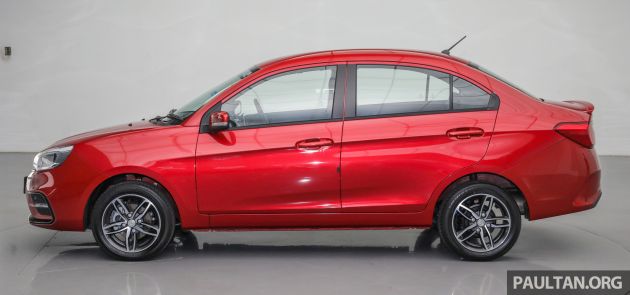



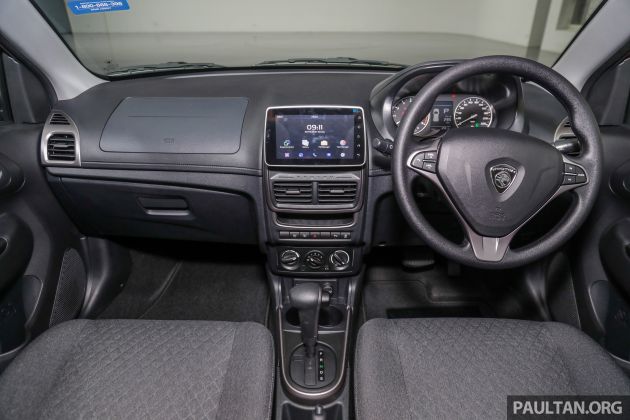












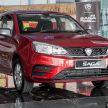





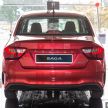

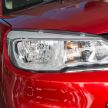



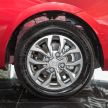
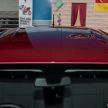
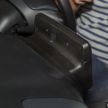
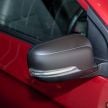
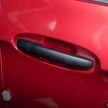

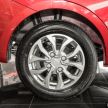


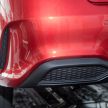




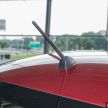
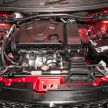

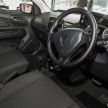
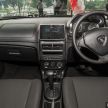
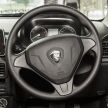
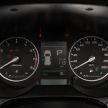
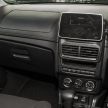
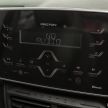
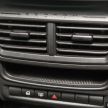
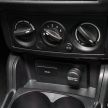


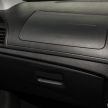
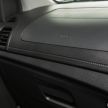
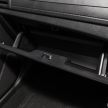
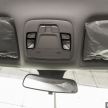
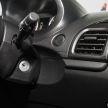
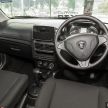
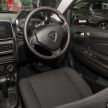
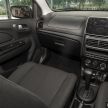
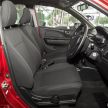
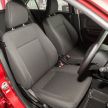
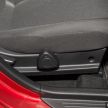
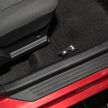
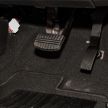
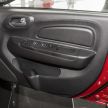
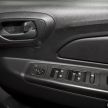
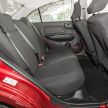

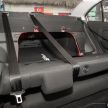
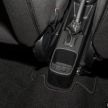
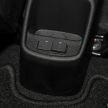
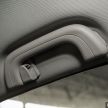
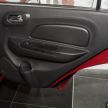
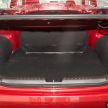
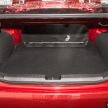

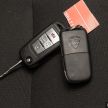




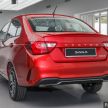
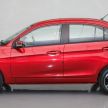


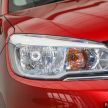
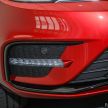
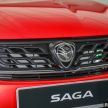
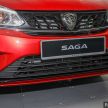
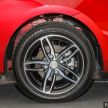
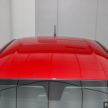
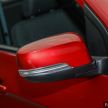
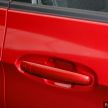

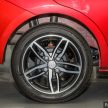


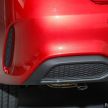

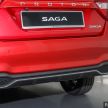


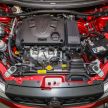
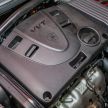
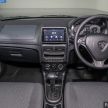
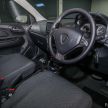
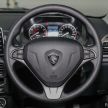

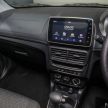
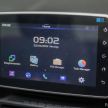
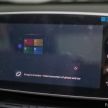
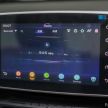
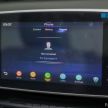
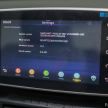
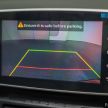
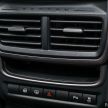
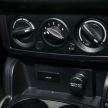
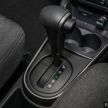
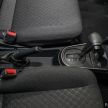

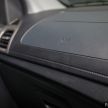
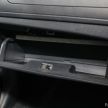
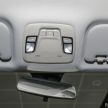
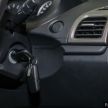
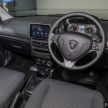
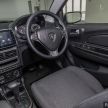
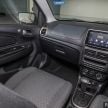
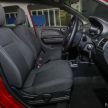
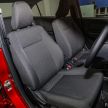
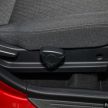
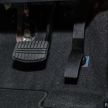
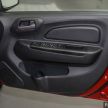
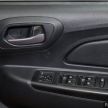
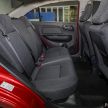
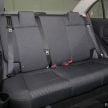
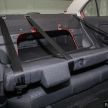

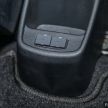
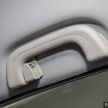
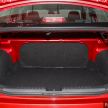
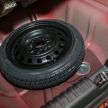
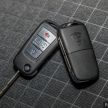


















AI-generated Summary ✨
Comments on the Proton Saga facelift highlight significant improvements such as the removal of the outdated CVT for the new Hyundai 4AT, which has garnered positive reactions for better performance and reduced fuel consumption. Many comments favor Proton's decision to lower prices and include more safety features like VSC, even in standard models, emphasizing its value for money. There is also a recurring sentiment that Proton is making a good comeback under Geely management and that the new design is more attractive. However, some comments remain critical about the continued use of old technologies such as timing belts and the absence of VSC in base variants, expressing concern over safety standards. Overall, the tone is optimistic about Proton’s strides forward, with a few voice of skepticism over lingering issues.